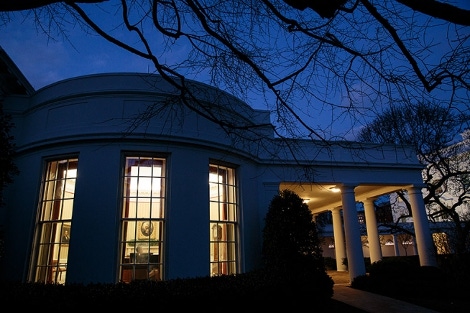White House Orders Federal Data Center Construction FreezeWhite House Orders Federal Data Center Construction Freeze
New data center optimization initiative seeks higher efficiency, aggressive cost savings

US government agencies are no longer allowed to build or expand data centers unless they prove to the Office of the Federal CIO that it’s absolutely necessary, according to a new memo released by the White House’s Office of Management and Budget.
The new Data Center Optimization Initiative replaces the now six-year-old Federal Data Center Consolidation Initiative and has much stricter goals and additional rules meant to reduce the government’s sprawling data center inventory and the amount of money it takes to maintain it.
The government spent about $5.4 billion on physical data centers in fiscal year 2014. The new initiative’s goals are to reduce data center spending by $270 million in 2016, by $460 million in 2017, and by $630 million in 2018, for a total of $1.36 billion in savings over the next three years.
According to a recent report by the Government Accountability Office, the government's efforts to reform IT spending have had varying degrees of success. Overall, data center consolidation and optimization efforts to date have resulted in about $2 billion in savings over the last five years, according to the GAO. For perspective, the government's total annual IT spend is about $80 billion.
According to OMB's most recent estimate, there are currently more than 11,700 government data centers.
While FDCCI and the subsequent Federal Information Technology Acquisition Reform Act required agencies to conduct data center inventories and identify facilities they could close and consolidate, set goals for footprint reduction, and created rules for regular progress reporting, they did not preclude agencies from building new data centers.
That’s no longer the case. If an agency wants to build a data center or expand an existing one, it must make the case to the OFCIO that there is no better alternative, such as using cloud services, leasing colocation space, or using services shared with other agencies.
DCOI also raises the amount of data centers agencies are required to close and puts in place a number of additional requirements for energy efficiency, server virtualization, server and facility utilization, and use of data center management tools.
Read more: Congress to Mull Government Data Center Efficiency -- Again
Get to PUE under 1.5 or Shut It Down
Every agency now has to install equipment for measuring every data center’s Power Usage Effectiveness. Data centers not slated for closure have to have PUE lower than 1.5 by September 2018.
If improving the PUE in that timeframe is not cost effective, an agency has to look for ways to run the workloads the data center supports elsewhere, such as a cloud service or a data center shared with another agency.
This applies to all so-called “tiered” data centers. More on that below.
If It Has a Server, It's a Data Center
The memo defines a data center as any room that contains at least one server, regardless of how it’s being used, i.e. production, stage, test, development, and so on.
The definition is limited to servers only. A room with switching and routing gear or security hardware will not be considered a data center under the new rules.
The latest initiative introduces the concept of tiered and non-tiered data centers. A tiered data center, under the definition in the memo, is one that has separate space for IT infrastructure, a UPS system, an independent cooling system, and a backup generator, or, in other words, a typical data center.
Any other kind of room with servers will be considered a non-tiered data center.
Agencies previously used a four-tier system to describe data centers in their portfolios. Facilities that fell into any of those four tier categories will now be considered simply tiered data centers.
The new rules also do away with the previous “core” and “non-core” data center distinctions.
Close More Data Centers Sooner
Agencies' previous goals were to close 22 percent of tiered data centers and 50 percent of non-tiered data centers. The new goals are to close 25 percent of tiered data centers and 60 percent of non-tiered data centers by the end of fiscal 2018.
Using DCIM No Longer Optional
Not only do agencies have to replace manual inventory management and infrastructure monitoring with automated Data Center Infrastructure Management software in all of their data centers by the end of 2018, the General Services Administration will oversee a centralized DCIM software procurement program that they will have to use.
The procurement program isn’t in place yet, so for now, agencies are free to select DCIM tools on their own. Once the program is in place, they will have to use it or make the case that it doesn’t fit their needs.
About the Author
You May Also Like







